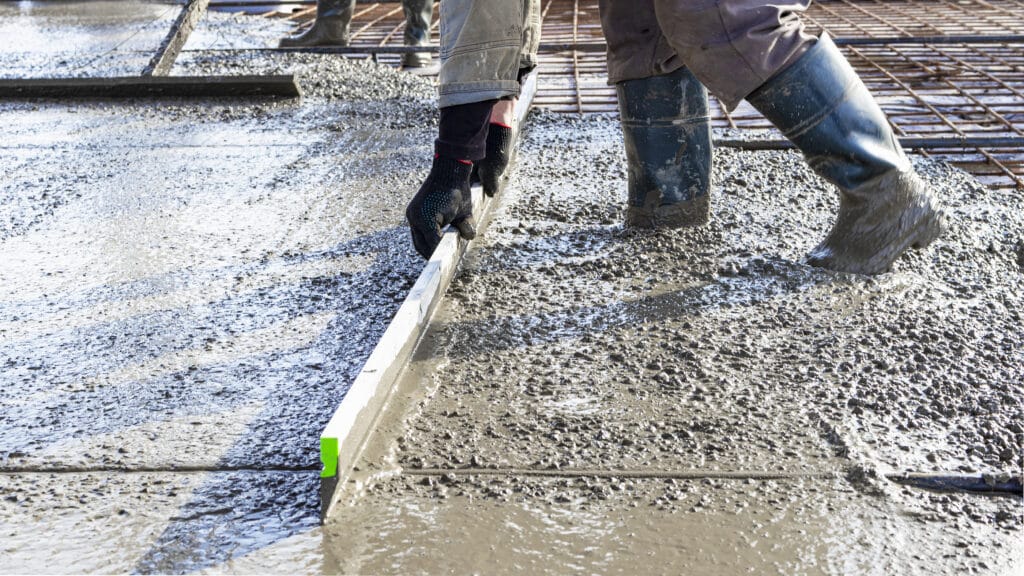Concrete is one of the most flexible building materials available, consisting of coarse and fine aggregates mixed with portland cement and water.
Ingredients are carefully proportioned and engineered to produce concrete with ideal characteristics for its intended use.
Cement
Cement serves as the binding agent that unifies aggregate, water and other ingredients used to form concrete. When mixed with water it forms a paste-like substance which serves to glue coarse and fine aggregates together into one strong substance.
Cement comes in many varieties to meet various applications. These characteristics may include setting time, early strength and durability.
Cement typically contains silica and alumina as hydraulic admixtures to aid hydration of the cement matrix, creating rapid strength development. To maximize surface area available for hydration, these compounds must be finely ground so as to maximize surface area available for hydration; doing this also “smears” particles, improving packing efficiency while decreasing water requirements needed to form pastes.
Water
Concrete can be found everywhere around us – from building foundations and roads, to playgrounds. Its durability comes from its combination of ingredients like aggregate, cement and water, providing strength.
As cement and water come together, hydration takes place, creating a glue like bond that holds coarse aggregate together. As more cement hydrates, stronger the concrete becomes. Concrete slabs Melbourne can be purchased as either a dry mix that you mix on-site or ready-mix delivered in the familiar rotating concrete lorries.
Water is essential in all stages of concrete production. From washing aggregates during their extraction, quenching of GGBS, mixing and placing concrete, cleaning plants, and dust suppression measures – to quenching GGBS after quenching it during quenching processes and dust suppression measures. While concrete producers tend to manage this resource effectively, climate change and population growth is putting strain on its supply.
Aggregates
Aggregates are inert granular materials like sand, gravel or crushed stone that are used with water and cement to form concrete. Aggregates add bulk while simultaneously improving strength, durability and workability of the finished product.
Aggregates can be obtained either naturally from sources such as sandstone and gravel deposits or artificially by recycling fly ash, blast furnace slag or rock waste. Their size, gradation and particle shape all play an integral part in shaping properties of freshly cast and hardened concrete.
Well-graded aggregates contain particles of various sizes that tightly pack together for maximum strength, while poorly graded ones have minimal variation between particle sizes, failing to take advantage of gaps between large particles that reduce strength. Gap graded aggregates don’t provide as much support.
Admixtures
Concrete is typically mixed at large industrial facilities known as concrete plants. Workers measure water and other ingredients by volume for proper proportioning before pouring it directly at a job site’ready-to-use’.
Chemical admixtures enhance the performance of concrete in various ways. Plasticizers enhance workability in fresh concrete without altering its water-cement ratio; superplasticizers offer similar benefits at higher concentration levels.
Air-entraining admixtures increase the amount of air entrained into concrete, increasing its durability in cold climates and strengthening it against corrosion inhibitors that protect steel reinforcement bars in concrete from chlorides’ damaging effects. Accelerators speed up hydration of cement for enhanced concrete strength. Corrosion inhibitors protect against the damaging effects chlorides have on steel reinforcing bars embedded within it.
Waste light mixes make use of recycled aggregates to produce low-compressive-strength concrete for road and building construction projects.
Strength
Concrete’s strength depends on several factors, including its aggregates quality and distribution, how much water it contains, mixing methods used during placement, curing methods used after curing is completed and whether its final strength depends mostly on compressive strength or must also contain enough tensile strength to withstand stresses that would cause it to sag or crack under stress.
Plain concrete lacks sufficient tensile strength, so reinforcement with steel rods or mesh is often added in order to increase its capacity against bending forces and form ferroconcrete (reinforced concrete).
Reduce the weight of concrete by using lighter aggregates or producing voids in its structure, or consider pre-stressed concrete, which builds compressive stresses during its construction in order to offset potential tensile stresses which may arise when used.

